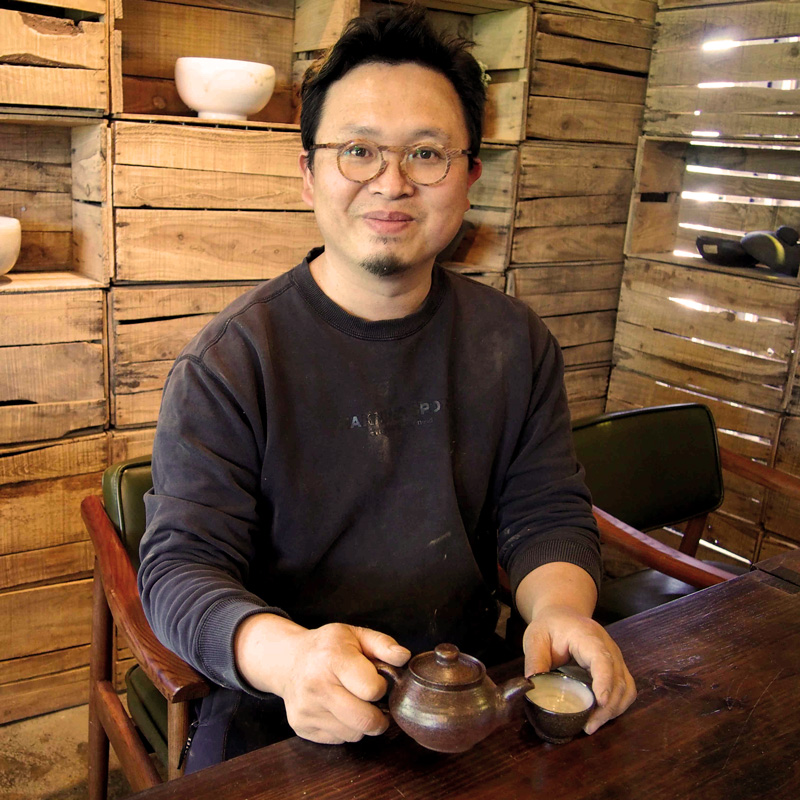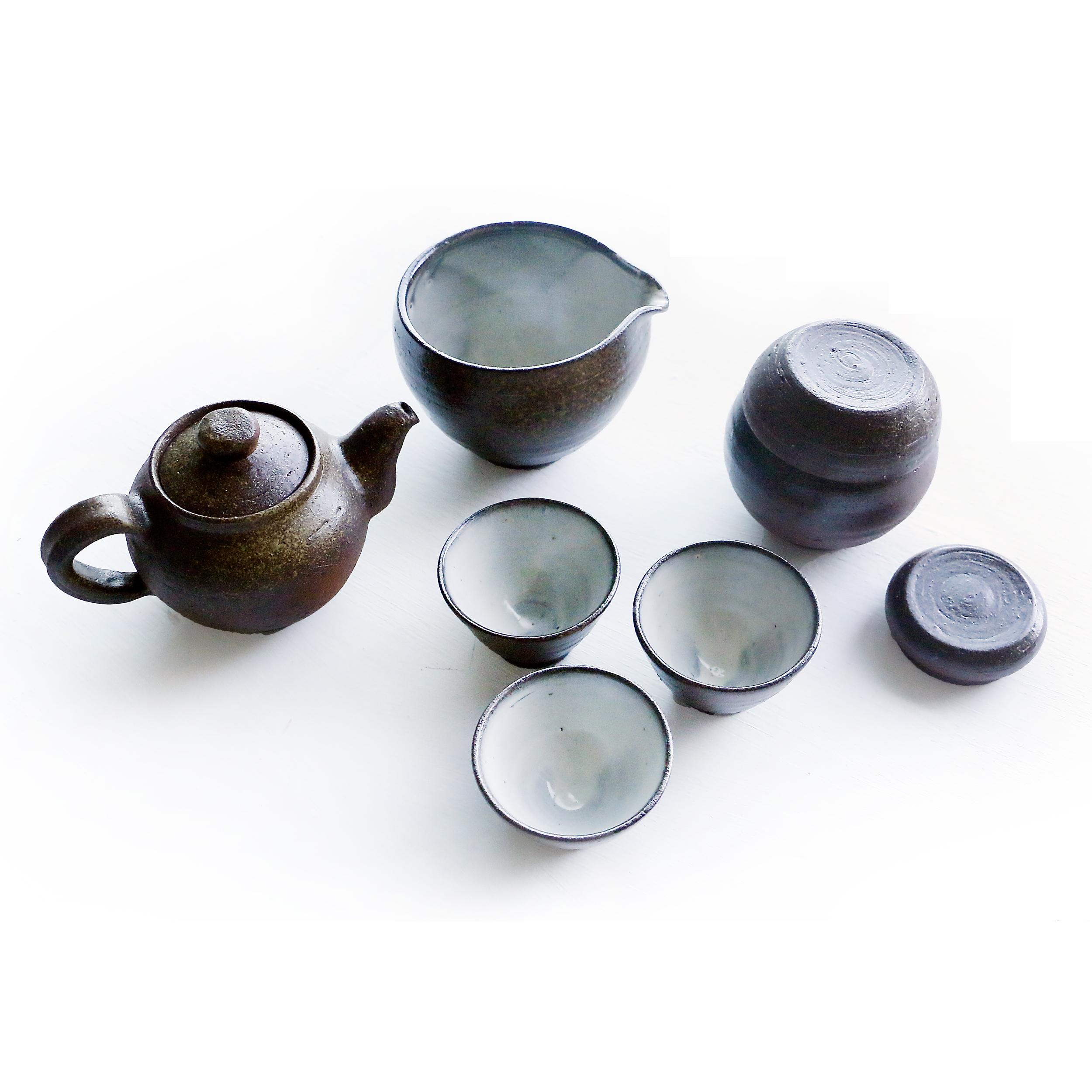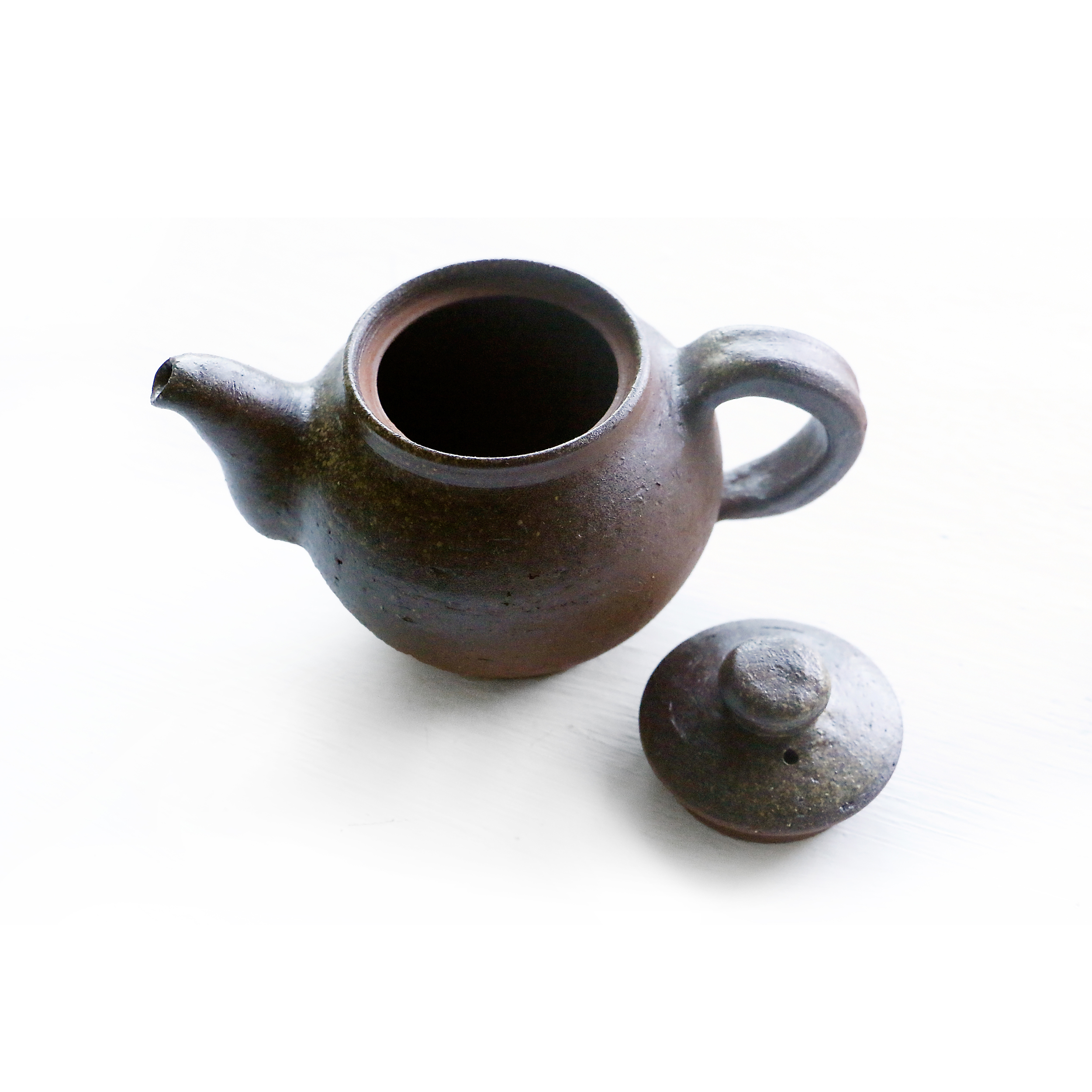Kang Seung Chul, Korean ceramist
During our tea trip in 2015, we visited Jeju Island in the Republic of South Korea.
While Korea has a very long history, it is a relatively young tea producing country. In the 7th century, Buddhist monks brought Camelia sinensis to Korea and started cultivating tea. However, in the 14th century, with significant political changes being made, Confucianism Buddhism was banned and many of the temples and all of the tea plantations were destroyed. Thankfully, just after independence in 1945, Koreans started cultivating tea again and indeed in a few regions, people managed to rebuild some of the old, abandoned or destroyed plantations. Today, Korean tea culture is getting stronger and stronger.
In many places in Korea, it is possible to see huge ceramic containers for fermenting food. These are the traditional Onggi pottery and are a patternless red and black ceramic. The colour is determined by the iron in the clay and how the containers are fired in the kiln. The more often the containers are fired, the darker they get.
Kang Seung Chul from Jeju Island, makes traditional Onggi containers, but at the same time, he has a fascination for the much more delicate tea ware. His source of inspiration is classical Korean and Japanese tea ware designs, which he reproduces and then develops further by including his own ideas. He exclusively uses the local porous clay, which is not glazed and which, through the firing process, develops different colours from light brown with yellow spots to different shades of red to dark brown. Kang Seung Chul fires some pieces over and over until they become black with an almost crystalline structure. These are his rarest pieces, as he looses a large proportion of his work because the repetitive firing causes a large number of breakages.
 Português
Português English
English Español
Español


